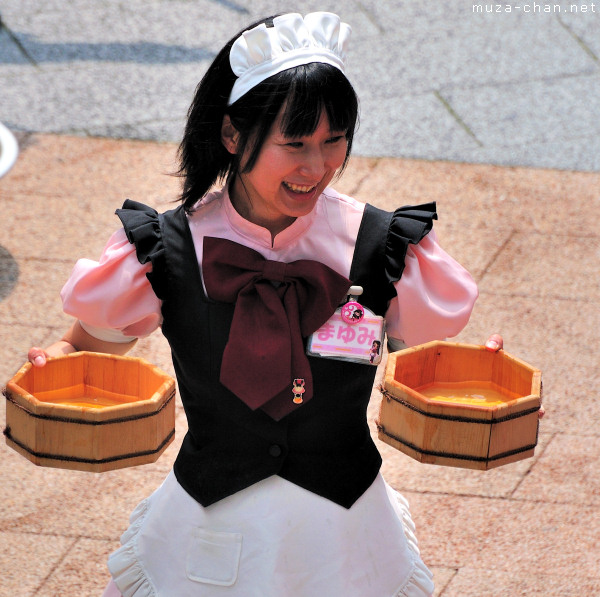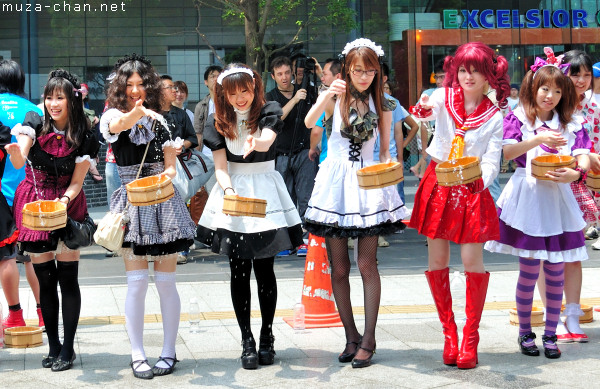In the old times, before the air conditioning, the Japanese people developed traditional ways to help cooling off during hot summer days… One very interesting technique, still largely practiced, is the use of the traditional furin.
Another one is uchimizu 「打ち水」, a typical Japanese traditional custom which consists in splashing water over the pavement in front of the stores, houses, shrines, temples or inside the Japanese gardens. Traditionally, uchimizu is done by using a bucket and a wooden ladle, by people dressed in the traditional yukata. An interesting detail is that the water used for uchimizu is not tap water, but recycled or rain water…
But one day a year, at the beginning of August, in Akihabara, in front of the UDX skyscraper, takes place a very special uchimizu, performed by girls dressed in… maid outfit, the famous Akihabara maids:
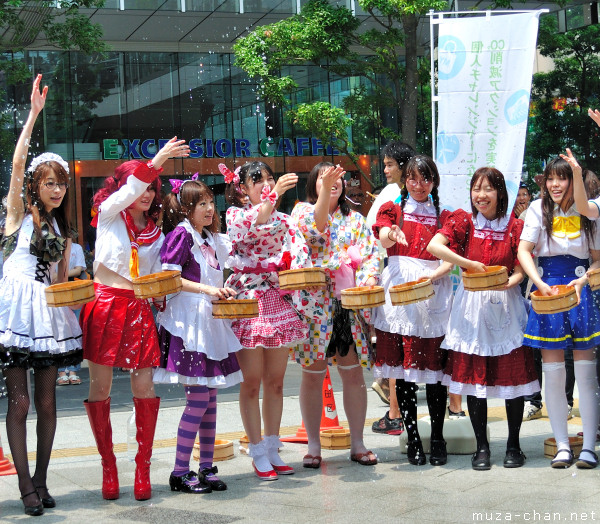
The Akihabara maids, the girls dressed in unusual outfits distributing leaflets advertising the maid cafés (メイドカフェ, Meido kafe) are one of the Akihabara attractions. In time, I became so accustomed to their presence that I have the feeling that they were always part of Tokyo’s life. But the maid cafés are actually a recent phenomenon.
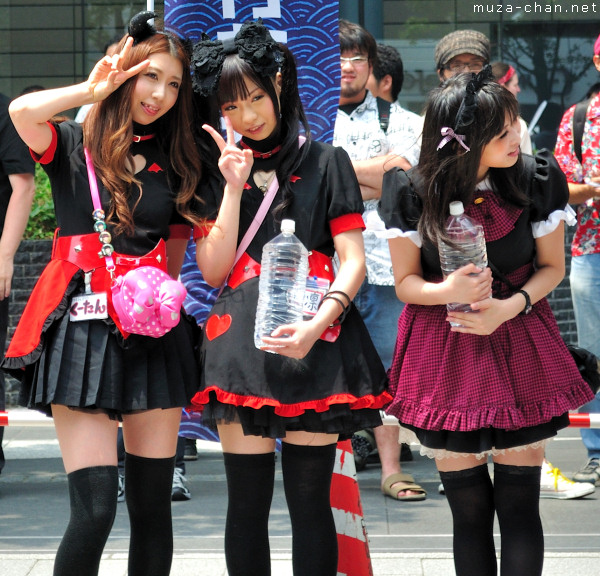
The first maid café appeared in Akihabara in 1998, as an advertising to the dating simulation game “Welcome to Pia Carrot". The characters from the game were waitresses at the Pia Carrot restaurant and they were wearing costumes inspired by the French maids…
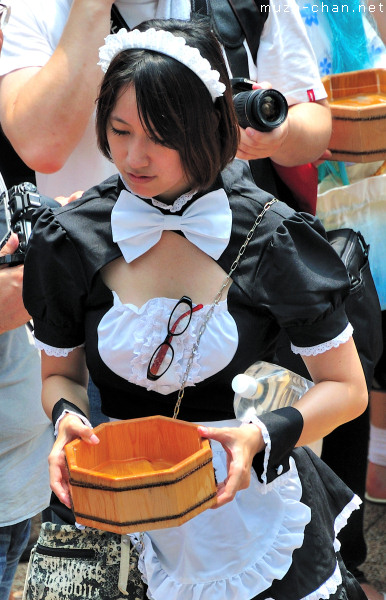
But the first permanent maid café opened in Akihabara in 2001, the Cure Maid Café. Three more cafés opened in 2002, and their number reached 40 in 2006, after Fuji TV’s television drama “Densha Otoko", which featured one of the best known maid cafés, Pinafore.
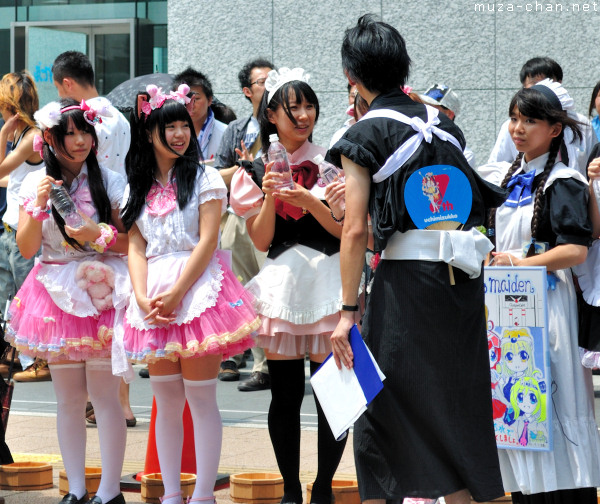
So, from a concept restricted to the otaku culture, the maid café emerged as a mainstream phenomenon.
And to strengthen the mainstream status, in 2006, inside the Akihabara guide (sponsored by the Japan National Tourism Organization), was published the first professional tour to include a maid café.
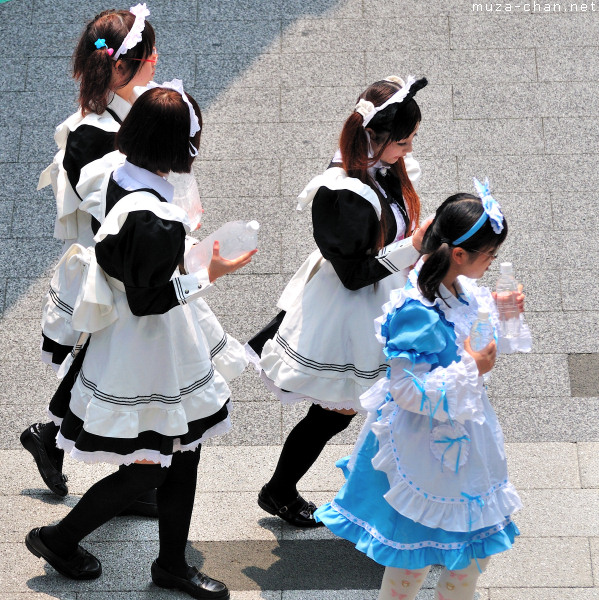
But let’s go back to uchimizu: the sprinkling with water has a spiritual significance, meaning purification, but the main reason for uchimizu is to cool the area, keep down the dust and to please the passersby…
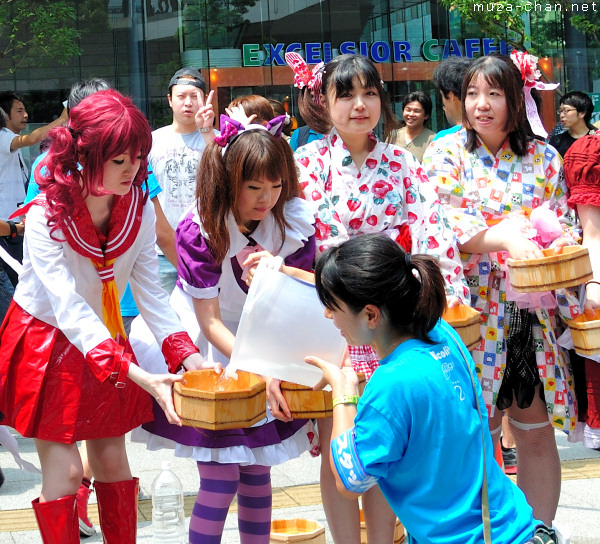
… or, in the Akihabara maids version, to have a little bit of fun… :)

… but also to promote the maid cafés…
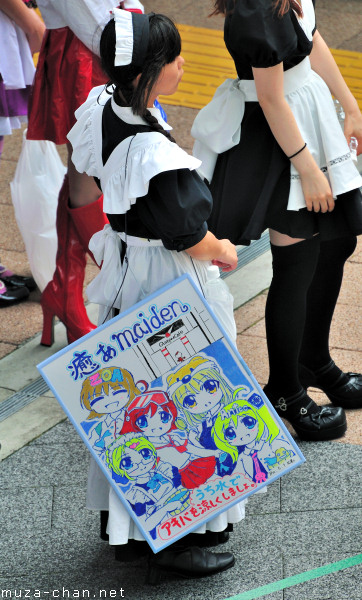
… and for the photographers is the only occasion when they can take pictures with the famous meido at their heart’s content…
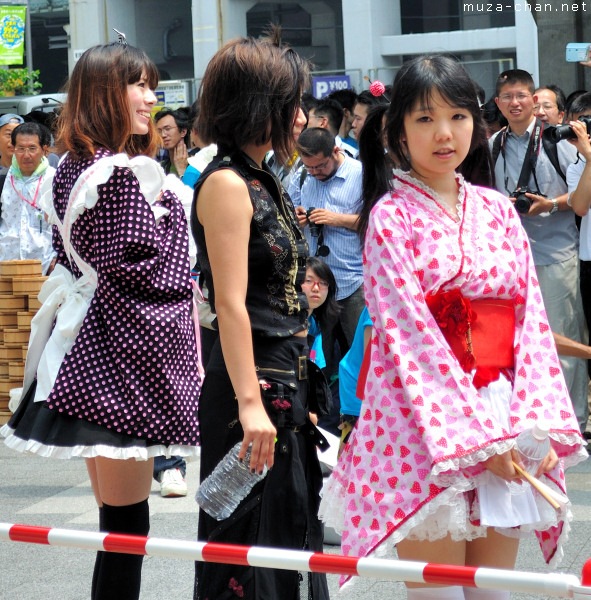
And fun it was! I enjoyed a lot taking pictures (yes, I am in that crowd)…
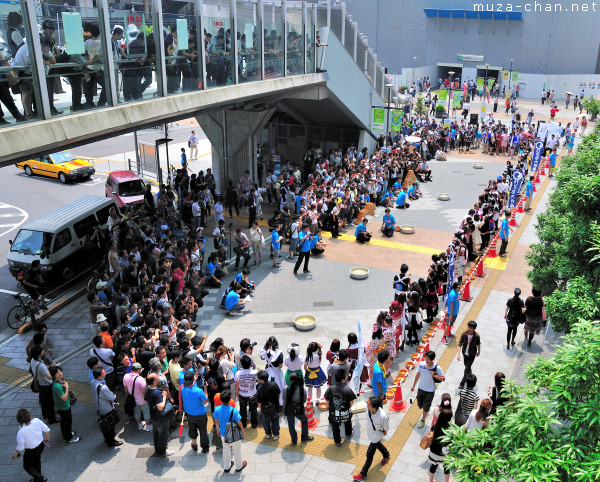
… severely supervised by the guards (don’t be fooled by the bunny ears):
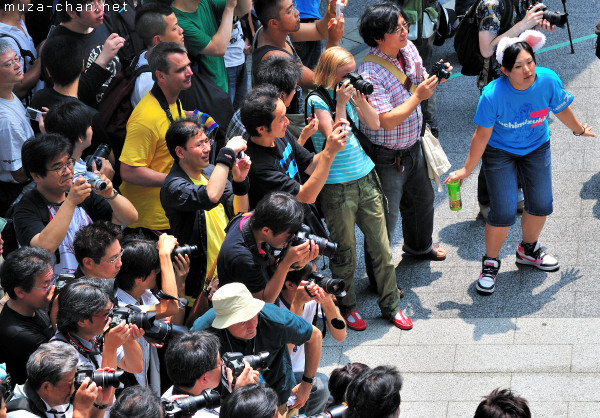
The girls sprinkled the hot pavement…
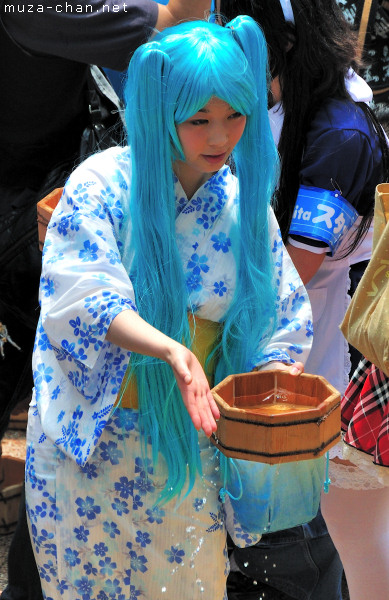
… with cute and elegant moves…

… but instead of cooling down, I think the boys just got hotter… :D
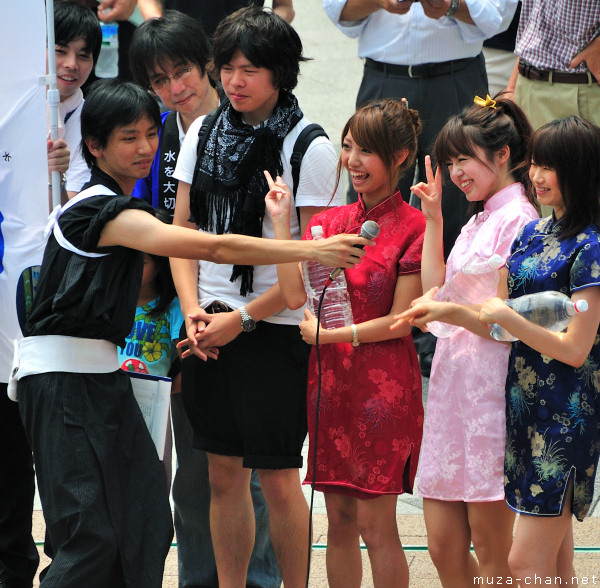
… which made me wonder… since the maids are “hot", don’t they warm up the atmosphere? :D
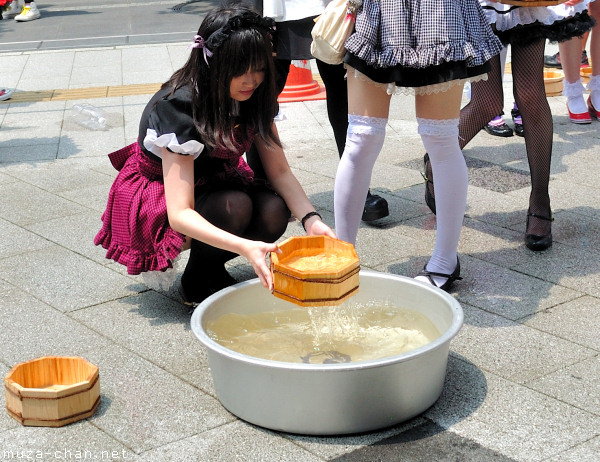
… anyway, let’s uchimizu!
